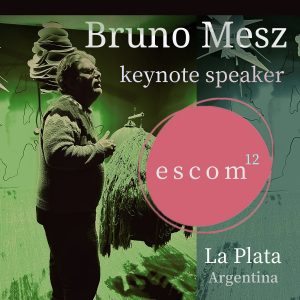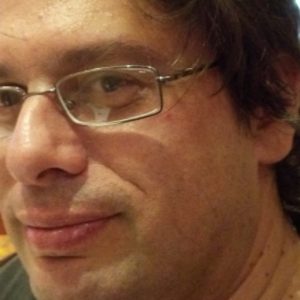La Plata
Keynote Speaker

Bruno Mesz
Crossmodal correspondences involving music: predicting musical emotions from visual shapes and materials, the music of perfumes and the gastrosonic coffee experience
Crossmodal correspondences have been defined as “the surprising connections that the majority of people share between seemingly unrelated stimuli presented in different sensory modalities”. There is a wealth of current research into crossmodal correspondences between complex musical stimuli and colors, shapes, odors, tastes/flavors and tactile sensations. After reviewing some theoretical ideas on typology and underlying mechanisms, I will look at three recent studies that pose questions about the role of musical emotions and show the existence of different correspondences between particular groups of persons. First, I will discuss the predictability of music-induced emotions based on the association of music with visual shapes and materials. Then, the second study shows that different odor dimensions such as warm/fresh, masculine/feminine, and camphoraceous or trigeminal are associated with distinctive musical parameters, but participants are divided in two groups that make different crossmodal connections. Finally, the third study shows that music may have an impact on the dynamics of perception and the shifting emotions in the multisensory experience of coffee.
Bio
 Bruno Mesz is an artscientist with a background in music, mathematics and cognitive science. He is professor and researcher in art and cognitive psychology at the Department of Electronic Arts and the Art and Culture Investigation Institute (IIAC) of the Universidad Nacional de Tres de Febrero, Argentina. His research focuses on the study of how music interacts with the chemical senses, touch and vision, and on the application of this research to sensory design and art. He has investigated crossmodal correspondences between music and taste features, and also between music and smell and between musical emotions and visual/tactile features such as shapes and materials. Also he has conducted research on how music modulates complex taste perceptions (such as those of coffee and wine), the aesthetics of multisensory experiences in virtual reality, and the impact of visual features on the evaluation of musical emotions.
Bruno Mesz is an artscientist with a background in music, mathematics and cognitive science. He is professor and researcher in art and cognitive psychology at the Department of Electronic Arts and the Art and Culture Investigation Institute (IIAC) of the Universidad Nacional de Tres de Febrero, Argentina. His research focuses on the study of how music interacts with the chemical senses, touch and vision, and on the application of this research to sensory design and art. He has investigated crossmodal correspondences between music and taste features, and also between music and smell and between musical emotions and visual/tactile features such as shapes and materials. Also he has conducted research on how music modulates complex taste perceptions (such as those of coffee and wine), the aesthetics of multisensory experiences in virtual reality, and the impact of visual features on the evaluation of musical emotions.
He has designed objects such as interactive wine glasses that deliver sound when drinking, and plateware inspired in musical emotions that includes tablets to create audiovisual atmospheres congruent or contrasting to a given dish. He has presented multi-sensory performances and art installations inspired in this research, at museums, theaters and art spaces in Argentina, Spain, USA, UK, France, Finland, Germany and Norway, and co-organized Brain and Wine, the first neuroscience symposium on wine, together with Oxford University and elBulli Lab.
He is also a pianist, specializing in contemporary music. He has performed in Argentina and abroad, both as soloist and with ensembles such as NKA Berlin, Ensemble Modern and Perceum.
